In the middle of August with three months to go before shipping mid- November, we were already working on the plan of attack for finishing the pigs. Up until this point, the hogs had been rotated through four paddocks, seeding with a mixed cover crop after moving on to the next area. The larger they get the more they eat and root up, which means we had to rotate them more frequently. With them quickly approaching their ship date and weighing in around 190 pounds, the time came to move them to virgin ground to help pack on the pounds and flavor the meat over the next three months. Fall is the perfect season for finishing them thanks to an abundance of produce, canning scraps, nuts, and fruits which not only offsets some feed cost, but also enhances flavor.

Even though pigs are nature’s rototillers, they do enjoy munching on various greens and other saplings. Maple tree saplings, Jewelweed, and spent plants from the garden are some of their favorite snacks, and make a good supplement to their existing varied diet. The three new paddocks we rotated them through from August through November were full of various tree saplings. Jewelweed another favorite of theirs, grew rampant around the farm making it easy to walk around and quickly pull it out to toss it in for them to enjoy.
In addition to the cover crops, spent broccoli, cauliflower, and broccolini plants from the garden had been pulled from the dirt and tossed in as well. All of these supplemented greens albeit do not provide the most calories for weight gain or contribute a whole lot for a flavor profile, they are full of beta carotene which results in healthier fat. This equates to more nutritious meat lower in saturated fat, cholesterol, and higher in mono and poly unsaturated fats. The nutrition of the food I raise is just as important to me as the flavor. This is why supplemental greens are just as important as any of food source that will add flavor or mass as they produce a more nutrient dense end product.
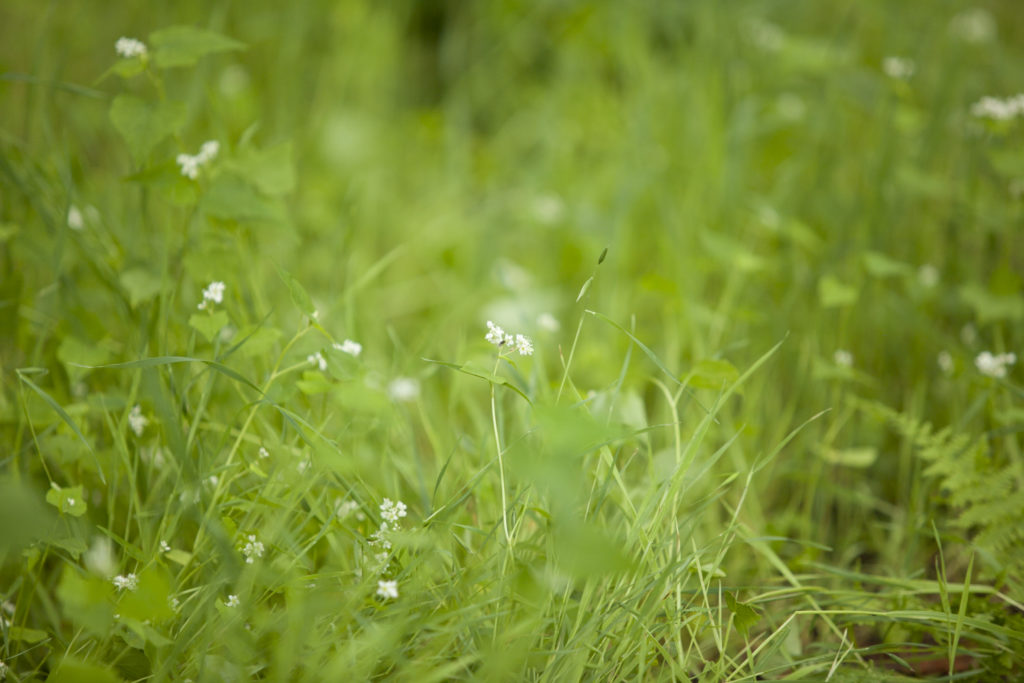
In regards to flavor alone, the food your hog eats towards the end its life is more important than what it consumes in the beginning. General rule is that the flavor of the meat will start to change after a month, and by the end of the third month the flavor profile has fully developed. With a ship date of mid-November, if we wanted the full flavor profile we hoped for, moving the pigs in the middle of August was essential.
Our main focus for the finishing period as far as supplemental food goes was acorns. The area that we moved the pigs to is full of last year’s acorns that have dropped, while this year’s were just beginning to. In addition to ones falling in the paddocks, I raked the acorns in early spring that fell into our yard from various oak trees and spread them throughout the paddocks the pigs finished their last three months on. Acorns are renowned for the sweet and nutty flavor they incorporate into the pork as well as the fat. The nut’s high fat level also lowers the melting point of the pork’s fat, creating a melt in your mouth texture. All of this flavor is why hogs finished on acorns fetch a higher price. The affect it has on the meat’s taste, texture, and nutrition is something that you can’t get in the store.
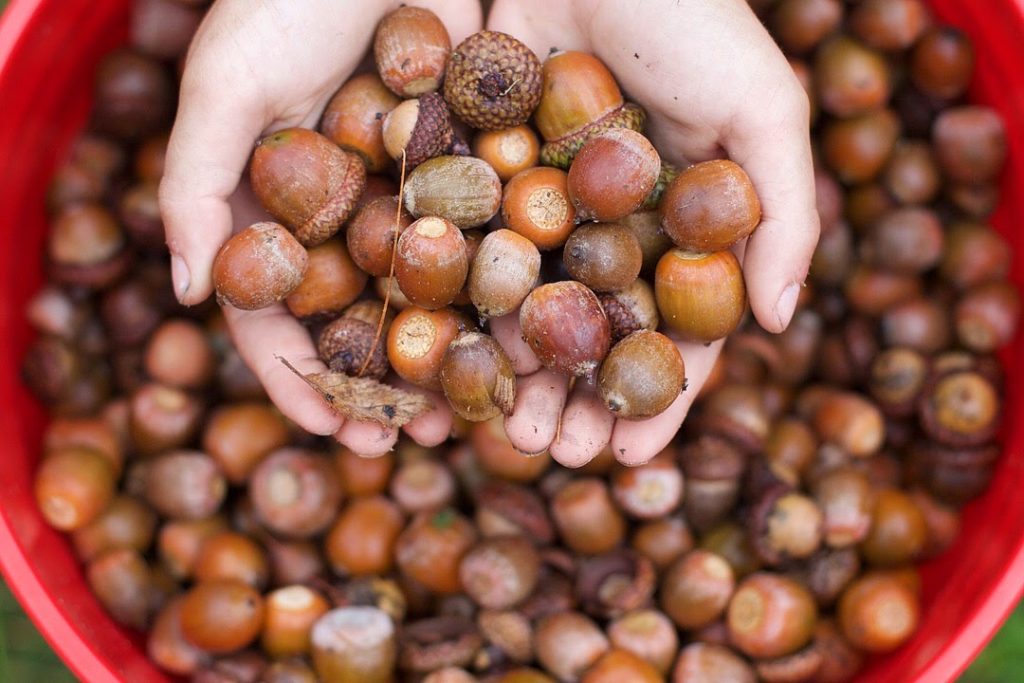
When fall creeps in in New England that means that apples, peaches, and tomatoes are starting to ripen. We have a few crap apple trees, so every few days I would go out with my five gallon bucket and collect all of the drops full of bugs, and toss them in the paddock for the pigs to munch on. These apples which were inedible for us, would otherwise go wasted. Fortunately, the pigs enjoy them and it’s free food (pork chops and apples anyone?!). At this time my tomato plants are loaded with fruit that is beginning to ripen, and when I can all of the different tomato products any cores, skins, and seeds will be gobbled up by the pigs.
I believe fall to be the best time of year to finish pigs due to the abundance of food scraps from the garden as well as mother nature’s gifts. If believing what I say isn’t enough for you though, I believe the proof is in the pudding (or in this case pork chops). The hard work and more labor intensive method of raising pigs on pasture and in the woods proved to be worth every second of our time when we could see the results in our meat. The result was deep red, nutrient dense meat with delicious marbling throughout and a nice fat cap. I do believe that I will make every effort from hereon out to finish my pigs in the fall!
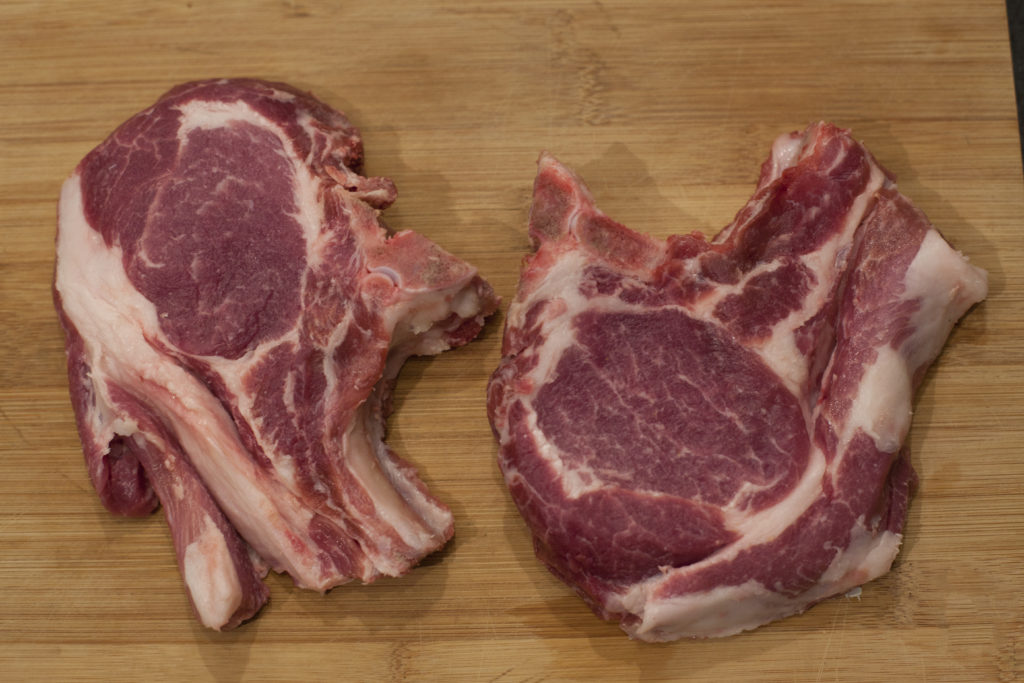
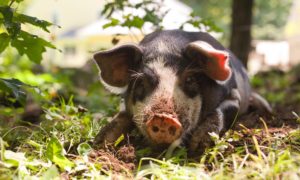
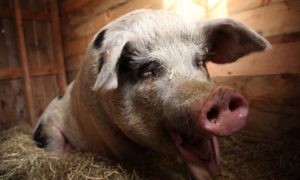
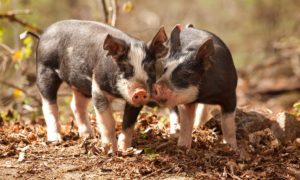
Pingback: For the Love of Lard | The Modern Day Settler
Pingback: Guanciale (and bacon) Cured the Ole' Fashioned Way | The Modern Day Settler